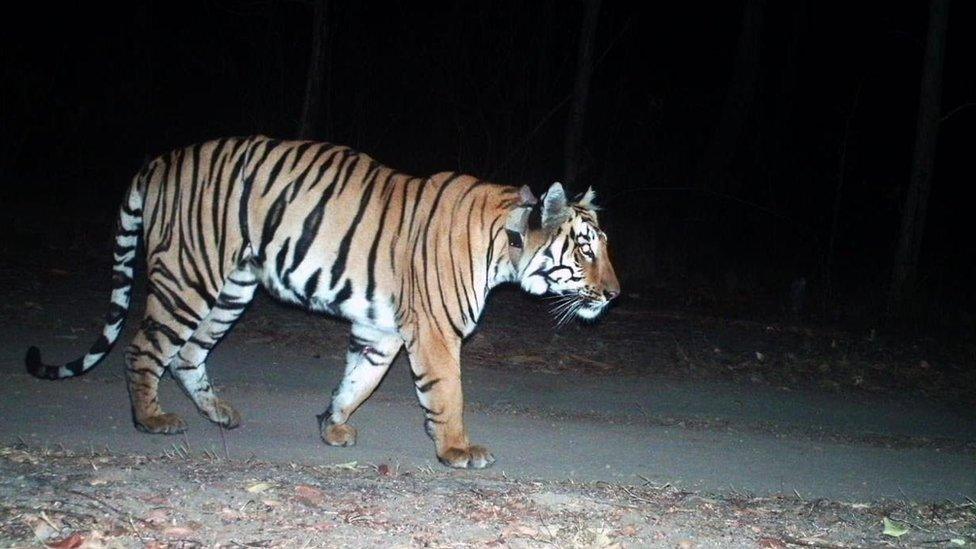India tiger on 'longest walk ever' for mate and prey
- Published

The tiger has walked across two states in India
A tiger has undertaken the longest walk ever recorded in India, travelling some 1,300km (807 miles) in five months.
Experts believe the two-and-a-half-year-old male is possibly in search of prey, territory or a mate.
The tiger, which is fitted with a radio collar, left its home in a wildlife sanctuary in the western state of Maharashtra in June.
It was then tracked travelling back and forth over farms, water and highways, and into a neighbouring state.
So far, the tiger has come into conflict with humans only once, when it "accidentally injured" one person who was part of a group that entered a thicket under which it was resting.
The tiger, called C1, was one of three male cubs born to T1, a female tiger in Tipeshwar wildlife sanctuary, home to 10 tigers in Maharashtra state.
He was fitted with a radio collar in February and continued to roam the forests until the onset of monsoon rains to "find a suitable area to settle".


The animal left the sanctuary at the end of June, and since then has travelled through seven districts in Maharashtra and the neighbouring state, Telangana. At the weekend, he was located in another wildlife sanctuary in Maharashtra.
Communication fears
Wildlife officials say the big cat has not travelled in a "linear manner". He is being tracked through GPS satellite information every hour and has been recorded in more than 5,000 locations in the past nine months.
"The tiger is possibly looking for territory, food and a mate. Most of the potential tiger areas [in India] are full and new tigers have to explore more," Dr Bilal Habib, a senior biologist with the Wildlife Institute of India, told the BBC.
The tiger hid during the day and travelled in the night time, killing wild pigs and cattle for food.
Dr Habib confirmed the one accidental injury to a man who entered the thicket where the tiger was resting, but said there had been no serious conflict with humans.
"People don't even know that this tiger is travelling in the backyard," he said.

India is now estimated to be home to 70% of the world's tigers
However, wildlife officials say the tiger may need to be captured and relocated to the nearest forest to "avoid any untoward accidents", forest officials said.
They also fear they will lose communication with the animal in the near future as the battery of the radio collar has been drained by 80%.
Tiger numbers have increased in India, but their habitat has shrunk and prey is not always plentiful, say experts.
Every tiger requires a breeding prey population of 500 animals in its territory to ensure a "food bank", say experts.
Tigers 'on brink of extinction' brought to wildlife park
- Published6 November 2018
- Published26 February 2014